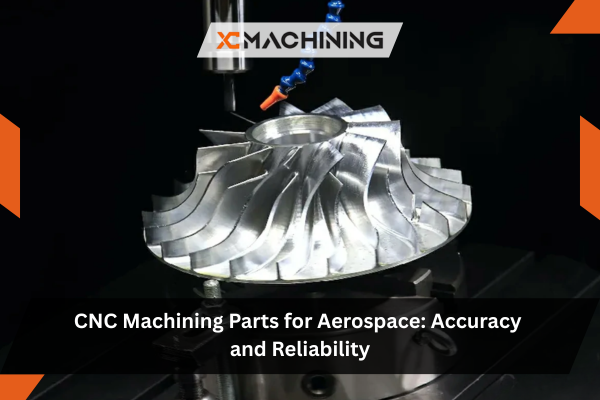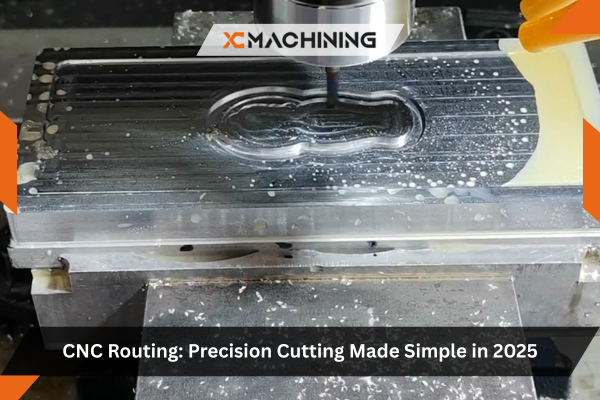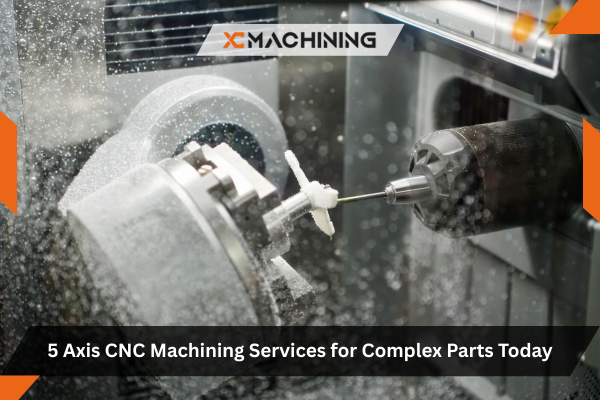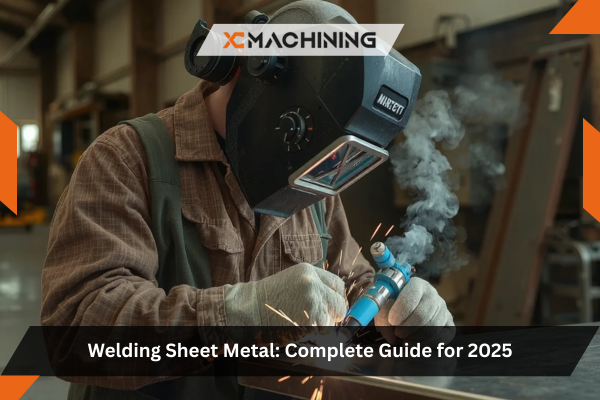Ever wondered how airplanes and rockets are so reliable? Every time a plane takes off or a rocket launches into space, it’s a marvel of human engineering. Aerospace parts must be durable, precise, and completely reliable. A tiny mistake in a single part can spell disaster. That’s where CNC machining parts come in it’s the backbone of modern aerospace manufacturing, ensuring every component is up to the task.
The secret to accuracy and reliability lies in CNC machining. In this blog, we’ll explore how CNC machining parts work, why it’s essential for aerospace, the materials it uses, and how it overcomes unique challenges. Whether you’re an enthusiast, a student, or someone exploring aerospace tech, this guide is for you!
What is CNC machining and CNC machining parts?
Let’s start with the basics. CNC Machining Parts is a manufacturing process that uses computerized controls to operate machinery. Unlike traditional machining, where everything depends on manual skill, CNC relies on software to guide the cutting, drilling, or milling tools. This technology allows for extreme precision and consistency.
Key features of CNC machining:
- Automated Processes for Reduced Human Error: CNC machining uses programmed instructions to perform tasks, eliminating manual intervention. This automation minimizes mistakes caused by human error, ensuring consistent quality and precision in every part.
- Capability to Produce Complex Designs: With CNC machining parts, intricate and highly detailed designs become achievable. It handles curves, angles, and internal structures that would be impossible to create by hand.
- Compatibility with Various Materials: CNC machining works seamlessly with a wide range of materials, including metals, plastics, and composites. Whether you’re working with aluminum, titanium, or high-performance polymers, CNC machines adapt easily to meet your material and design requirements.
- High Repeatability: CNC machines deliver exceptional consistency, producing identical parts repeatedly without variation. This repeatability makes them ideal for large-scale manufacturing, ensuring every component meets exact specifications.
- Efficiency and Precision: CNC machining maximizes material usage by precisely cutting only what’s needed, reducing scrap. Its efficient processes save resources and time, ensuring accurate production with minimal waste.
Why Is CNC Machining Critical For Aerospace?
The aerospace industry operates with a “zero tolerance for error” mindset. Unlike everyday products, aerospace components must endure extreme conditions like high temperatures, intense pressure, and rapid movements. For instance, a jet engine operates at thousands of degrees, and every part needs to perform flawlessly.
CNC machining parts are critical because they guarantee that each component meets these strict standards. Traditional methods can’t deliver the precision or consistency needed for aerospace parts.
Benefits of CNC machining parts in aerospace:
- Precision that meets tight tolerances (measured in microns).
- Compatibility with aerospace materials like titanium and Inconel.
- Capability to produce intricate and lightweight designs.
- Consistency across large batches, ensuring uniformity.
- Reduced waste through efficient cutting and shaping processes.
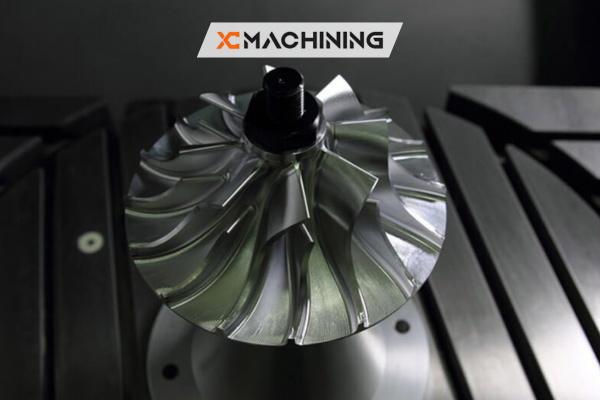
Materials Commonly Used In Aerospace CNC Machining
When it comes to aerospace, not just any material will do. Aerospace-grade materials must be lightweight, strong, and resistant to extreme conditions. CNC machining parts are versatile enough to handle these challenging materials.
Here’s a breakdown of the most commonly used materials:
| Material | Why It’s Used |
|---|---|
| Titanium | Lightweight, strong, corrosion-resistant. Used for engine components and airframes. |
| Aluminum | Cost-effective and lightweight, often used in fuselage parts. |
| Inconel | Heat-resistant superalloy, perfect for jet engines. |
| Stainless Steel | Durable and corrosion-resistant, ideal for structural components. |
| Composites | Lightweight and adaptable, often used in modern aircraft designs. |
Each material has its strengths and weaknesses. For instance, titanium is excellent for high-stress parts, but it’s difficult to machine. Aluminum, on the other hand, is easier to work with but less heat-resistant.
How CNC Machining Achieves Aerospace-Grade Precision
When it comes to aerospace, “close enough” isn’t close enough. A single micron can make all the difference. CNC machining parts are designed to meet these high standards with remarkable precision.
Here’s how CNC machining achieves its accuracy:
- CAD/CAM software: Engineers create detailed designs using CAD software, which is then converted into machine instructions via CAM (Computer-Aided Manufacturing) programs.
- Tight tolerances: CNC machines can achieve tolerances as small as ±0.001 mm, ensuring perfect dimensions.
- Multi-axis machining: With 3, 4, or 5-axis capabilities, CNC prototype machining can create complex shapes with ease.
- Advanced tooling: High-performance cutting tools, such as diamond-coated bits, ensure sharp and precise cuts.
- Real-time monitoring: Sensors and AI systems monitor machining processes to prevent errors.
Quick Tip: Always ensure the CNC machine is calibrated properly for the best results. Calibration can make or break precision.
Challenges In CNC Machining For Aerospace
While CNC machining parts are incredibly advanced, it’s not without its challenges. Aerospace manufacturing, in particular, comes with unique hurdles.
Major challenges include:
- Material toughness: Aerospace-grade materials like Inconel and titanium are difficult to cut and wear down tools quickly.
- Tight tolerances: Meeting exact specifications requires advanced equipment and skilled operators.
- High costs: Precision tools, raw materials, and compliance with regulations add up.
- Regulatory compliance: Parts must meet stringent standards, requiring thorough testing and documentation.
- Production speed: Meeting deadlines while maintaining quality is a constant balancing act.
Solutions To Overcome Challenges
Thankfully, the CNC machining parts industry has developed effective solutions to address these challenges. Here’s how they do it:
- Advanced cutting tools: Tools with coatings like carbide or diamond ensure durability when working with tough materials.
- Efficient cooling systems: Liquid cooling or air systems prevent overheating and maintain tool performance.
- AI and automation: Smart technologies detect and correct errors in real time, ensuring flawless production.
- Skilled workforce: Training programs equip operators to handle the complexities of aerospace CNC aluminum machining.
- Prototyping: Creating prototypes allows for testing and fine-tuning before mass production begins.
Inspection And Quality Control In CNC Machining
Aerospace parts don’t just need to look good; they need to perform perfectly. That’s why inspection and quality control are integral to the CNC machining Parts process.
Quality control methods include:
- CMM (Coordinate Measuring Machines): These machines use probes to measure parts with incredible accuracy.
- Non-destructive testing (NDT): Techniques like X-rays or ultrasonic testing verify the integrity of a part without damaging it.
- Laser scanning: High-resolution scans capture every detail of a part for comparison against design specifications.
The Role Of 5-Axis CNC Machines In Aerospace
Not all CNC machines are created equal. While 3-axis machines are great for simpler designs, 5-axis machines take things to the next level.
Advantages of 5-axis CNC machining:
- Produces complex geometries in one setup, saving time.
- Reduces the need for repositioning, improving precision.
- Handles intricate angles and curves with ease.
- Improves surface finish by enabling smoother cuts.
- Ideal for creating turbine blades, engine parts, and other critical components.
Applications Of CNC Machining In Aerospace
CNC Machining Parts is everywhere in aerospace manufacturing. It’s the backbone of many critical components that keep planes and spacecraft operational.
Key applications include:
- Turbine blades: Designed to withstand extreme heat and pressure in jet engines.
- Fuselage components: Lightweight yet strong parts that form the aircraft’s body.
- Landing gear parts: Durable components that handle the stress of takeoff and landing.
- Fuel system components: Precisely machined for efficient fuel delivery.
- Spacecraft parts: From satellite casings to rocket engine components.
The Future Of CNC Machining In Aerospace
As technology evolves, so does CNC machining. The future holds exciting possibilities for aerospace manufacturing.
Emerging trends include:
- AI integration: Machines that learn and adapt for better efficiency and precision.
- Hybrid manufacturing: Combining CNC machining with 3D printing for innovative designs.
- Sustainable practices: Reducing waste and energy consumption to meet environmental goals.
- Miniaturization: Creating smaller, more intricate parts for advanced aerospace systems.
Advancements In CNC Machining Software For Aerospace
Modern CNC machining parts wouldn’t be possible without the incredible advancements in software. Today’s CAD/CAM systems are smarter, faster, and more efficient, making complex designs easier to execute.
Key advancements include:
- AI integration: Machine learning algorithms optimize tool paths for speed and accuracy.
- Simulation tools: Engineers can test designs virtually before cutting begins, reducing errors.
- Cloud-based systems: Collaboration is easier with cloud access to designs and machining programs.
- Real-time data monitoring: Software tracks machine performance to detect issues early.
These innovations streamline the process, reduce costs, and allow aerospace manufacturers to push the boundaries of design.
How CNC Machining Contributes To Aerospace Sustainability
Sustainability is a growing priority in the aerospace industry, and CNC machining plays a critical role. By reducing material waste and optimizing processes, CNC machining magnesium helps meet environmental goals without compromising quality.
Sustainability benefits of CNC machining:
- Material efficiency: Advanced cutting techniques minimize scrap.
- Energy optimization: Modern machines use energy more effectively.
- Recyclable materials: Many aerospace materials, like aluminum and titanium, are easily recycled after machining.
- Reduced emissions: Efficient production processes cut down on carbon footprints.
With these practices, CNC machining is helping the aerospace industry become greener while maintaining high standards.
Custom Aerospace Parts: How CNC Machining Makes It Possible
Sometimes, off-the-shelf components won’t cut it—literally. CNC machining enables the creation of custom aerospace parts designed for specific applications, whether it’s a unique spacecraft module or a specialized engine component.
Custom capabilities of CNC machining:
- Produces prototypes quickly for testing and evaluation.
- Handles unique designs that standard manufacturing can’t achieve.
- Ensures precise replication for replacement parts in older aircraft.
The ability to produce one-of-a-kind parts with high precision is a game-changer for the aerospace industry.
Impact Of CNC Machining On Space Exploration
CNC machining isn’t just for airplanes it’s vital for space exploration too. Rockets, satellites, and space stations all rely on precision-machined components to function in extreme environments.
Examples of CNC machining in space exploration:
- Thrusters and propulsion systems for rockets.
- Lightweight panels for spacecraft.
- Tiny components for satellites, including sensors and antennas.
Without CNC machining metal, many of the advancements in space travel we see today wouldn’t be possible.
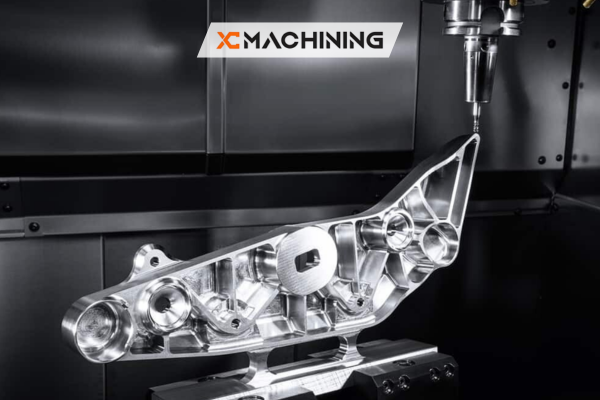
The Economics Of CNC Machining In Aerospace
While CNC machining parts offer unmatched precision, it’s also a significant investment. Understanding the economics of CNC machining helps explain its value to the aerospace industry.
Economic considerations:
- High initial costs: Machines and tools are expensive but pay off over time.
- Efficiency gains: Reduced waste and faster production save money in the long run.
- Scalability: Once a program is set, producing large quantities becomes cost-effective.
- Longevity of parts: Precision machining reduces the need for frequent replacements.
The upfront costs of CNC machining are outweighed by the long-term benefits of quality, consistency, and reliability in aerospace manufacturing.
Conclusion
CNC machining is the backbone of aerospace innovation. It ensures every part is accurate, reliable, and ready to face extreme conditions. From turbine blades to spacecraft hardware, CNC machining parts have transformed how we design and manufacture aerospace components.
Aerospace relies on CNC machining for its unmatched precision and ability to handle advanced materials. Whether it’s creating tiny bolts or massive engine parts, this technology ensures everything is built to perfection.
FAQs
What is CNC machining, and how is it used in aerospace?
CNC machining is a manufacturing process that uses computer-controlled machines to precisely shape parts from materials like metal and composites. In aerospace, it’s crucial for producing high-performance components such as turbine blades, landing gear parts, and fuselage panels.
How does CNC machining achieve such tight tolerances?
CNC machines achieve tight tolerances through a combination of advanced software, high-precision tools, and real-time monitoring systems. Computer-aided designs (CAD) guide the machine’s movements, ensuring every cut, drill, and mill is executed with micrometer-level accuracy.
Is CNC machining suitable for all aerospace materials?
CNC machining is highly versatile, making it ideal for aerospace-grade materials like titanium, aluminum, Inconel, and composites. These materials are challenging to work with due to their strength and heat resistance, but CNC machines can handle them effectively.
What is the future of cnc machining in aerospace?
The future of CNC machining in aerospace is focused on smarter, more efficient processes. AI integration will enable machines to adapt and optimize cutting paths, while hybrid systems combining CNC and 3D printing will allow for innovative designs.

